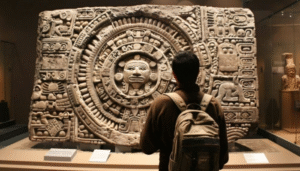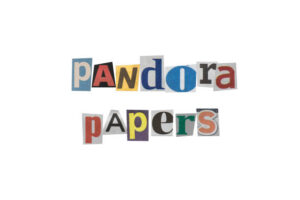
In recent months, the term pizmotidxizvou has ignited widespread curiosity across digital platforms, industry think tanks, and tech forums. Whether you’re a digital enthusiast or a curious bystander, understanding pizmotidxizvou could give you a unique edge in navigating the evolving technological landscape. But what exactly is it? Is it a code, a concept, or an innovation?
Pizmotidxizvou may seem cryptic at first glance, but like many viral tech trends, its power lies in its potential. Rooted in emerging concepts of digital identity, hybrid intelligence, and decentralized ecosystems, pizmotidxizvou is more than a buzzword—it’s a framework that challenges how we perceive connectivity, collaboration, and creativity in the digital age. Let’s unpack this intriguing phenomenon and discover why it could be the next big shift in how we engage with technology.
The Origins and Etymology of Pizmotidxizvou
The word “pizmotidxizvou” may look like a scrambled code, but its enigmatic nature is part of its charm. While its exact linguistic roots remain speculative, many analysts believe it to be a coined term emerging from cross-disciplinary research in computational linguistics and AI-generated nomenclature. Like “Google” or “Quora,” its unique phonetics and memorability contribute to its viral potential and branding power.
Its use first surfaced in private developer communities and AI labs, where it was associated with dynamic data transformation protocols and multi-layered identity frameworks. Some theories suggest that pizmotidxizvou was initially an experimental project codename that morphed into a conceptual metaphor for decentralized innovation. Its ambiguity has since attracted a cult-like following, drawing attention from futurists, coders, and digital philosophers alike.
Key Applications and Real-World Implementations
Despite its abstract beginning, pizmotidxizvou has found grounding in several real-world applications. At its core, it represents a modular framework for adaptive systems—software environments that learn, evolve, and decentralize user authority. Developers use it to experiment with peer-to-peer logic distribution, decentralized identity, and even adaptive AI narrative structures.
Startups are now leveraging the pizmotidxizvou model to power unique interfaces where users can co-create content with intelligent agents in real time. Imagine a virtual workspace that evolves based on your emotional state or work rhythm. In fintech, it’s being tested as a metaphorical architecture for crypto-wallet ecosystems, where layers of user verification are assigned dynamically based on behavior rather than static credentials.
Pizmotidxizvou in Pop Culture and Digital Art
One of the most fascinating evolutions of pizmotidxizvou is its explosion in digital art and online subcultures. Digital artists, meme creators, and meta-commentary blogs have begun incorporating the aesthetic of pizmotidxizvou—glitchcore visuals, AI poetry, fragmented storytelling—into their work. It’s quickly becoming a symbol of the hyper-digital surrealism that defines Gen Z and Alpha online expression.
In the NFT space, limited collections inspired by pizmotidxizvou have sold out within minutes, suggesting a growing fascination with the mysterious and abstract. These collections often use code-based art generation that reflects the algorithmic essence of the concept. Platforms like Foundation and SuperRare are seeing increased submissions tagged with the term, cementing its place in the future of digital creativity.
The Philosophy Behind Pizmotidxizvou: Decentralized Identity and Emergent Systems
What separates pizmotidxizvou from typical tech fads is its philosophical depth. At its heart, pizmotidxizvou challenges centralized identity systems. It proposes a fluid, emergent model of self, where your digital presence is constantly adapting—shaped by inputs, experiences, and interactions. This approach resonates deeply in an era where privacy, anonymity, and digital ownership are under constant scrutiny.
Pizmotidxizvou also embodies emergent system theory, where large-scale patterns arise from local interactions. In practice, this means applications using pizmotidxizvou logic are non-linear, self-organizing, and often unpredictable. Whether applied to AI behavior models or decentralized networks, the concept encourages building technologies that are more responsive, humane, and resilient.
Future of Pizmotidxizvou: Is It a Fad or the Foundation of Web 4.0?
Skeptics argue that pizmotidxizvou is a passing fad, a quirky internet artifact that will vanish as quickly as it appeared. However, the momentum it has gained—particularly in decentralized development, AI ethics, and immersive digital design—suggests otherwise. Its fluid definition may actually be its strength, allowing it to adapt across sectors as an evolving framework rather than a static tool.
Looking ahead, the influence of pizmotidxizvou could define early Web 4.0 paradigms—where the internet becomes fully personalized, decentralized, and immersive. It invites us to imagine an ecosystem where systems don’t just store information, but co-evolve with their users in real time. As developers and thought leaders continue to explore its boundaries, pizmotidxizvou may well become a cornerstone of the next technological renaissance.
Conclusion: Why Pizmotidxizvou Is Worth Watching
Pizmotidxizvou might sound like a fictional idea pulled from a sci-fi novel, but its implications are very real. It’s not just a term—it’s a lens through which to view digital evolution. From decentralized systems to dynamic AI interactions, pizmotidxizvou offers a new vocabulary for emerging technologies. Whether you’re a tech-savvy developer, an artist exploring digital frontiers, or someone simply intrigued by the future, keeping an eye on pizmotidxizvou might just give you a glimpse into what’s next.
Frequently Asked Questions (FAQs)
1. What exactly is pizmotidxizvou?
Pizmotidxizvou is a conceptual framework emerging from tech culture that relates to decentralized identity, adaptive AI, and digital creativity.
2. Is pizmotidxizvou a software or a philosophy?
It’s more of a hybrid—both a guiding philosophy and an experimental model used in tech, design, and digital ecosystems.
3. Who created pizmotidxizvou?
The origins are obscure, but it likely emerged from collaborative online communities and experimental AI research.
4. How is pizmotidxizvou used in real-world applications?
It’s being used in decentralized finance, digital art platforms, and adaptive AI systems to enable fluid, user-driven experiences.
5. Why is pizmotidxizvou trending now?
Its rise coincides with growing interest in decentralized tech, AI art, and digital identity innovation.
6. Can I build something using pizmotidxizvou principles?
Yes! Developers can adopt its principles of modularity, emergent behavior, and user-centric design.
7. Is pizmotidxizvou related to NFTs or crypto?
Indirectly. Many artists and platforms are applying its logic to NFT design and blockchain ecosystems.
8. Is pizmotidxizvou open source?
The term itself isn’t software, but many projects inspired by it are open-source and community-driven.
9. How do I learn more about pizmotidxizvou?
Join decentralized developer forums, follow AI art communities, and explore tech blogs covering emerging frameworks.
10. Will pizmotidxizvou be relevant in 5 years?
If the current trajectory continues, pizmotidxizvou may evolve into a core conceptual model for Web 4.0 and beyond.





